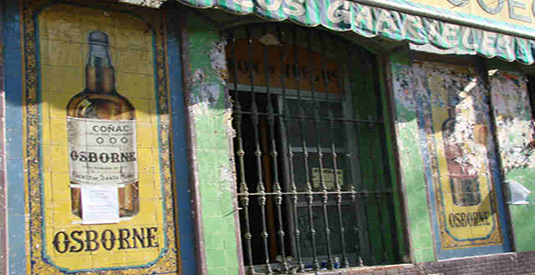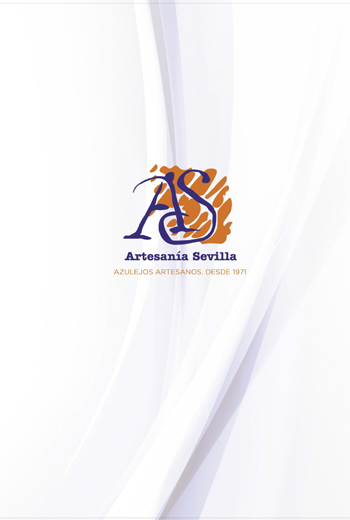- Artisan Tiles
- 0 likes
- 4872 views
The amount of decorative tiles scattered around Seville never ceases to amaze, we can find some of them of great value and very emblematic in the city. Next, in Artesanía Sevilla , we are going to show you some of the most famous tiles in the capital of Seville . Some of them are even in plain sight on busy streets, and still the details, techniques and all the history that these tiles hide can go unnoticed.
The Gabrieles
This old bar and hostel, located next to Plaza de Armas, had the appeal of a spectacular façade of tiles made using the mixed technique of dry rope and painted flat tile. The first technique, explained in a previous post, is characterized by being a drawing made with a brush with grease, although it is only intended to chemically reinforce the separation between enamels. The second technique is made by painting on the sponge cake with a white tin base.
These tiles are from 1935 and made at the Mensaque Rodríguez factory.

Arch of the Macarena
In the spectacular Macarena arch we find another emblematic tile from Seville with the image of Our Lady of Hope Macarena portrayed by means of a ceramic painting. It was inaugurated on May 27, 1923 by the Infanta María Esperanza de Borbón.
Bar europe
In Alcaicería de la Loza street, which is on the corner of Siete Revueltas, we find a piece from 1925 created by the painter Carlos Hermoso Araujo. Like many bars in the city, it has decorative tiles on its façade, in this case they are made with the painted flat tile technique.
Sports Z
Undoubtedly one of the most famous tiles in the city for being one of the largest and being in one of the most central streets, Calle Sierpes on the corner of Calle Rivero. It is a 1944 tile made, like the tile on the front of Los Gabrieles, with the mixed technique of dry rope and painted flat tile, by the author José Ruesga Salazar. The building where it is located was an armory that later became a sports store, both already closed
Mary Help of Christians Outpatient
Even in the most everyday buildings in Seville we can find beautiful tiles, as is the case in health centers or old outpatient clinics. A perfect example is the María Auxiliadora ambulatory, which has a tile made by the ceramic sculptor Emilio García Ortiz and made in the modernist style ceramic technique. The same tile is also found on Doctor Fleming, Amante Laffón and Marqués de Paradas streets, dating from the 1960s.
If you take a simple walk through the streets of Seville your path will undoubtedly cross a good number of different styles and techniques embodied in ceramics, and of course we will not lack inspiration thanks to them, if we look for a new style to decorate. At Artesanía Sevilla we recommend the tiles that best suit your needs, you just have to contact us and we will assist you without obligation.

